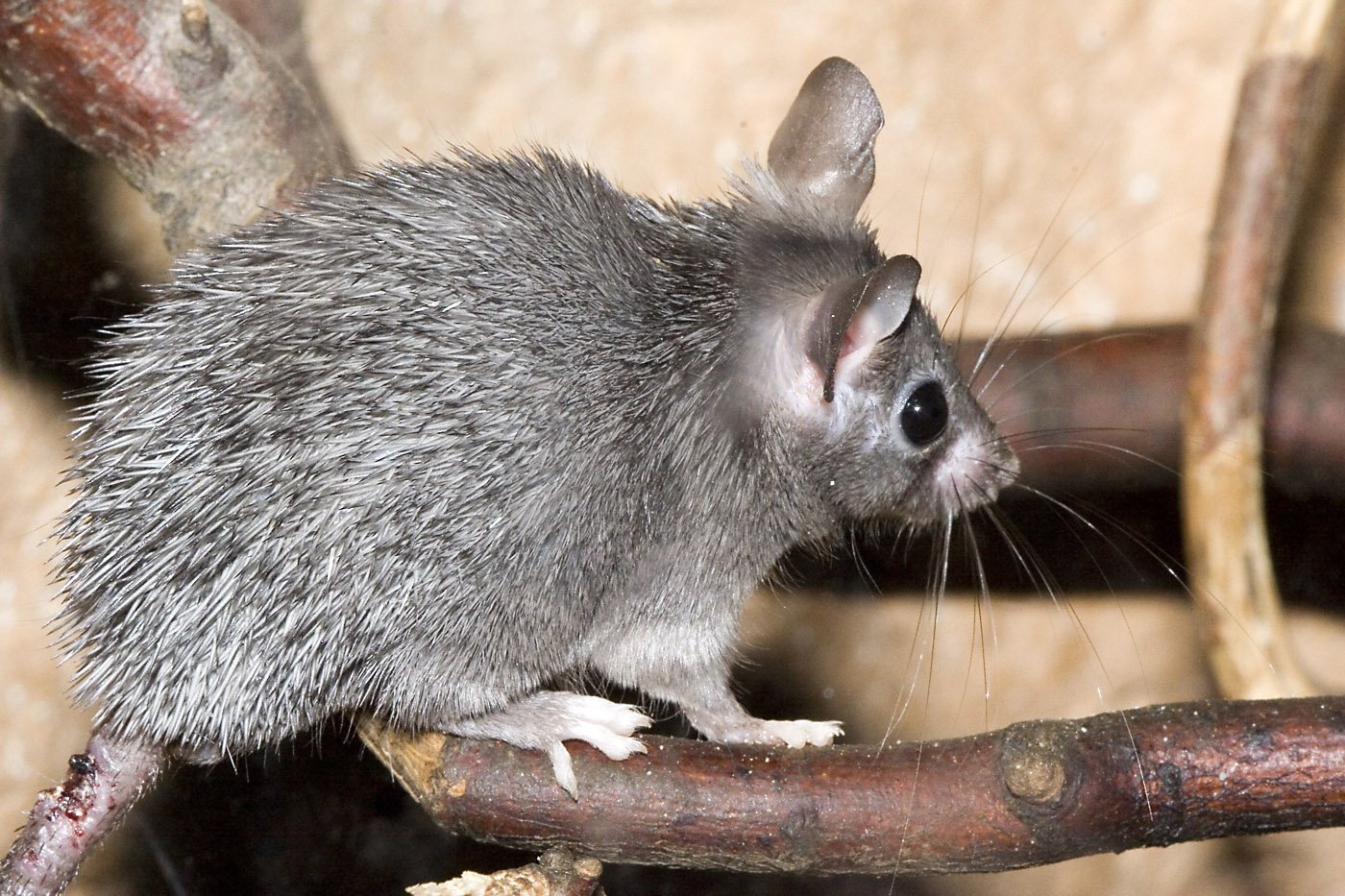Spiny Mouse Magic: An interview with Chelsey Simmons
Author: Kacey Haptonstall
Chelsey Simmons is the epitome of a forward thinker. Her lab at the University of Florida examines the mechanobiology of mammalian regeneration. She is an associate professor in mechanical and aerospace engineering with a joint appointment in biomedical engineering and a courtesy appointment in cardiovascular medicine.
By the nature of her work, she has an interdisciplinary approach to thinking about human health and disease. In a 2018 interview she speaks to what we at Fauna believe is the best way to approach looking at disease “We’ve been engineering using the same materials for decades if not centuries and it’s time to think of a new way to engineer…I think that cell therapy and regenerative medicine looks at how to use what nature’s already built as your building blocks for building new things”.
We have partnered with Dr. Simmons to conduct studies around the Spiny Mouse (Acomys cahirinus) and their ability to heal wounds without fibrosis. This species of Spiny Mouse is native to Egypt and is a nocturnal omnivore. Their regenerative capabilities have garnered attention from researchers around the world and present a wealth of information on regeneration, as well as female reproductive health. Given that Dr. Simmons has such a multi-dimensional interest, we wanted to find out more about why she chose Spiny Mice and what we can learn from these amazing animals.
What is unique/special about Spiny Mice that makes them a key resource for biomedical research?
Spinies are the only known adult mammals that can regenerate multiple organs after widely varied trauma. While some mammals like rabbits have limited regeneration capacity and human adults have very little, Spinies can regenerate skin after large burns, muscle after chemical injury, heart and kidney function after oxygen deprivation, and more.
What inspired you to start working with these creatures in general?
I was initially attracted to the abnormal mechanical properties of their skin – most mammals have very elastic skin, like balloons, that stretch and spring back but Spinies have very brittle skin that rips easily, like perforated paper. I’m trained as a mechanical engineer, and through most of my career, I studied the response of cells to physical forces. This stark difference in the mechanics of Spiny Mouse skin really intrigued me – are regenerative cells wired differently or are they just receiving different mechanical cues? As I studied the animals and its cells more and more, we realized the cells really are wired differently and that understanding its genome will be critical to understanding regeneration. That’s why we’re so excited to partner with Fauna and leverage their genomics and target identification pipeline.
What is holding the field back?
Spiny research is held back by the dual threat of limited research tools for novel animals and a lack of support for truly revolutionary research. Funding agencies want to “invest” in projects with a guaranteed ROI, and truly high-risk projects like studying Spiny Mouse are hard to garner support for. Reviewers and program managers are right in that it’s risky and traditional, commercially available tools aren’t great for working with Spiny Mouse, but we’re really running out of cool new ideas from traditional research approaches. Developing new tools for new animals is so important, and we are really excited by Fauna’s approach to leveraging underappreciated and underfunded animals to revolutionize human health.
How have you seen the research in these and other non-model species change over the last 5 or 10 years and where is the field going?
On one hand, big data ‘Omics approaches have become cheaper and easier, which have been a boon to researchers working with non-traditional research organisms. Since off-the-shelf antibodies and kits don’t work for non-traditional research organisms, cheap and fast proteomics and multiplexed DNA/RNA analysis become our most viable tools. On the other hand, research administration continually has been squeezing funding and demanding economies of scale that labs working with non-traditional research organisms can’t deliver. It’s complicated and expensive to take care of and run assays for research organisms that aren’t standard mice and rats, so we have to run proportionally fewer experiments. I’m worried that our reluctance to fund “pie in the sky” research, even when it’s expensive, could leave us missing out on truly breakthrough results.
Where do you see parallels between your work and other non-model organism researchers?
The system has been designed and refined for model organisms over a number of decades, so all non-traditional research organisms are hitting up against similar barriers though with very different nuances. Breaking through these barriers is similar to the concept of Universal Design to accommodate varied physical and mental capabilities – when you build curb cuts to make it easier for wheelchairs to navigate the built environment, people pushing strollers, using crutches, carrying boxes, etc. all find it easier to be successful. If we rethink the way we support preclinical researchers to go beyond standard mice and rats, I think we’ll see ALL biomedical research prosper.
Tell me a bit more about your collaborative Spiny network
We’ve brought together about a dozen PIs and 20+ trainees at UF as the “Acomys Research Consortium”. We have monthly meetings and write grants and papers together, and we hope to expand nationally with annual retreats to bring together a broader community. It’s all really helpful on a boring, logistical level – we coordinate our breeding colony and experiments to share animals and tissues. Our careful coordination means very few animals are wasted, and typically 2-3 experiments from multiple labs will be going with each cage of animals; we’re really good at optimizing our animals and their scientific contributions.
What do you think are the benefits of academic and industry collaborations in science?
Academic science is ultimately concerned with generating new knowledge and training researchers, and for better or worse, it’s possible to do academic science in a vacuum, divorced from real-world applications. Industry collaboration can provide a useful translational lens to direct science toward efforts that are more likely to result in products with influence on patients, and that’s super exciting. Industry can also bring new funding mechanisms and different approaches at scale to advance science in ways that federally funded academic research just can’t achieve.
What do you wish people understood about the animals you work with?
For Spiny, I just wish more people knew about them. Their ability to revolutionize human health is self-evident, so we just need more public understanding and support for studying these amazing animals.



